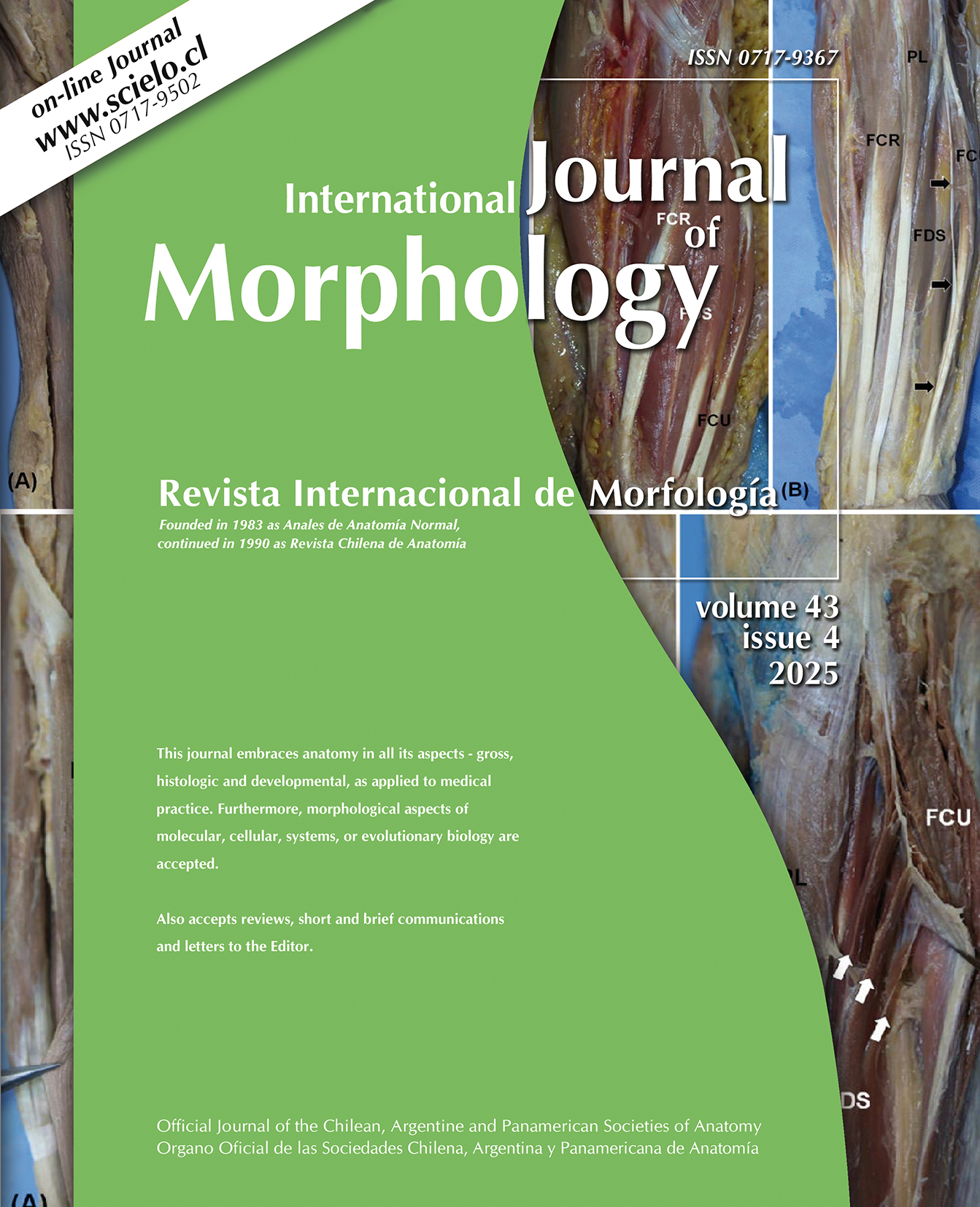Biometric Study of the Femoral, Popliteal and Posterior Tibial Arteries in Relation to the Stents
Moreira da Costa Filho, E.; Avelino dos Santos, T. F.; Avelino dos Santos, F. T.; Honorato Pereira, V. H.; Brandão Pitta, G. B.; del Sol, M.; Olave, E. & Sousa-Rodrigues, C. F.





























